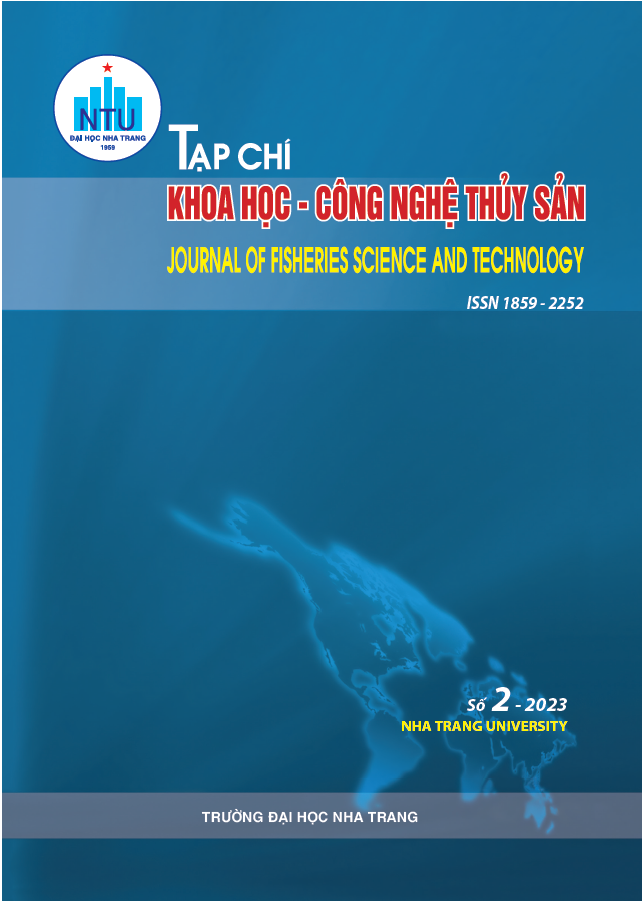##plugins.themes.huaf_theme.article.main##
Abstract
This study aimed to investigate the effects of feeding frequency on growth, survival, and feed ultilization efficiency of juvenile golden trevally fish. The experiment was designed as a completely randomized one-factor design with four treatments (2, 4, 6, and 8 times/day). The golden trevally fish, with an initial size of 2.64 ± 0.07 cm and weight of 0.41 ± 0.03 g/fish, were reared in 70 liter composite tanks at a density of 1 fish/L. Each treatment was performed with three replicates over a 28-day period. The results indicated that the growth parameters (length, weight, and biomass) were highest at the feeding frequencies of 6 and 8 times/day, followed by 4 times/day, and lowest at the feeding of 2 times/day (P < 0.05). There was no significant difference between the growth parameters of fish fed 6 times/day and 8 times/day (P > 0.05). Feeding frequency affected the coefficient of variation of body weight (P < 0.05) but did not significantly affect the coefficient of variation of total length, condition factor, survival rate, or deformation rate of the fish. The treatments that fed 4 to 8 times/day had significantly lower feed conversion ratios (FCR) compared to the treatment that fed 2 times/day (P < 0.05). Correlation analysis revealed that the maximum length growth rate was achieved at the feeding of 6.5 times/day. From the above results, it can be seen that the feeding frequency of 6 times/day is suitable for rearing juvenile of golden trevally fish.

